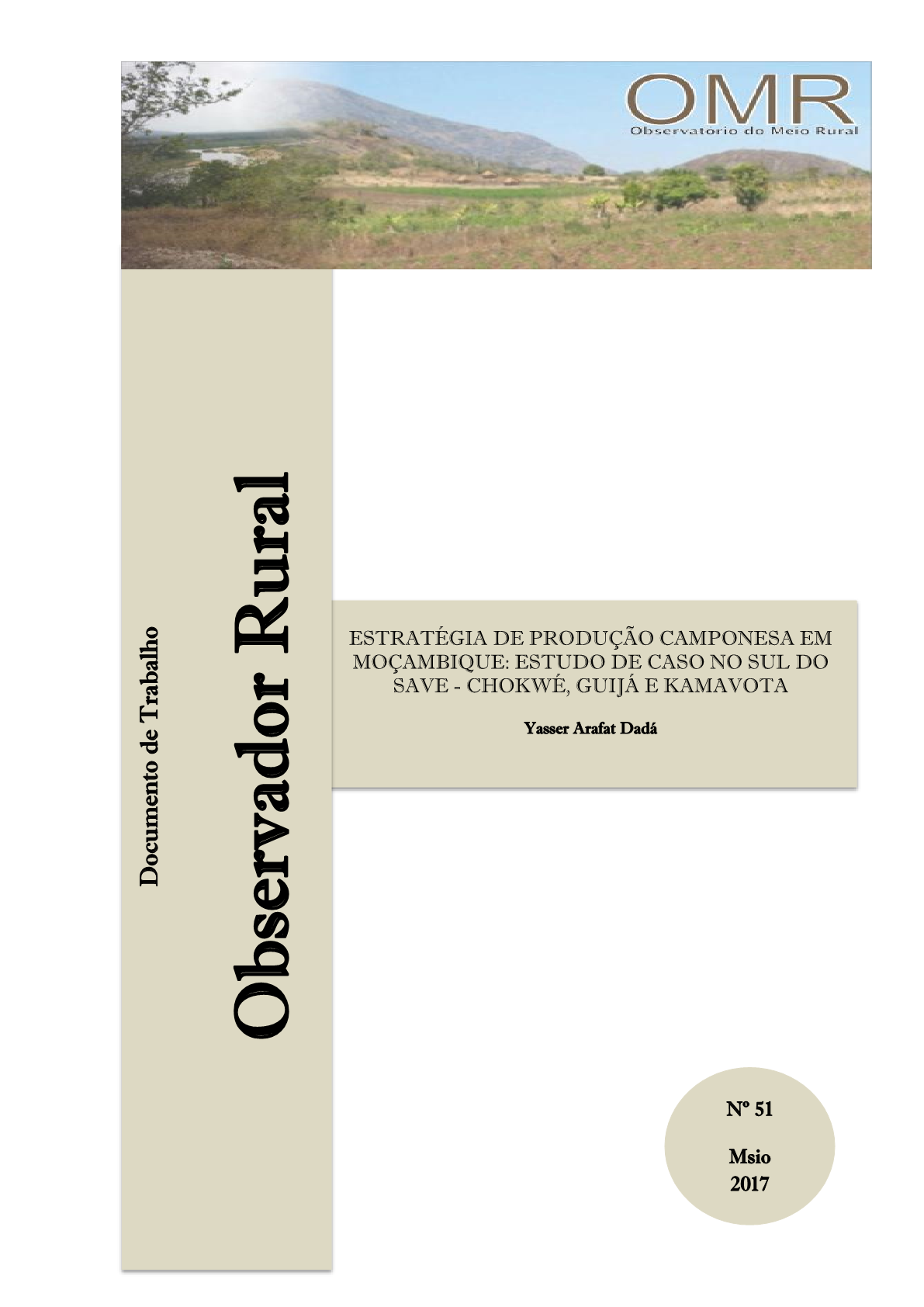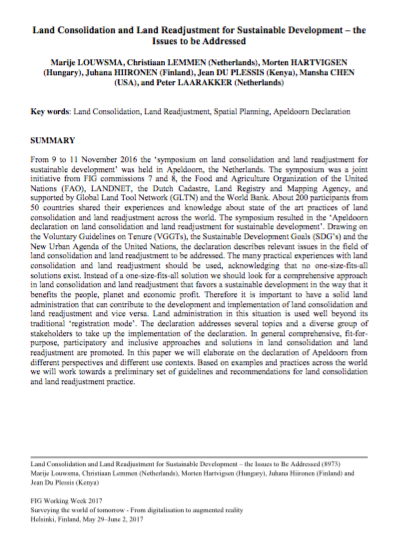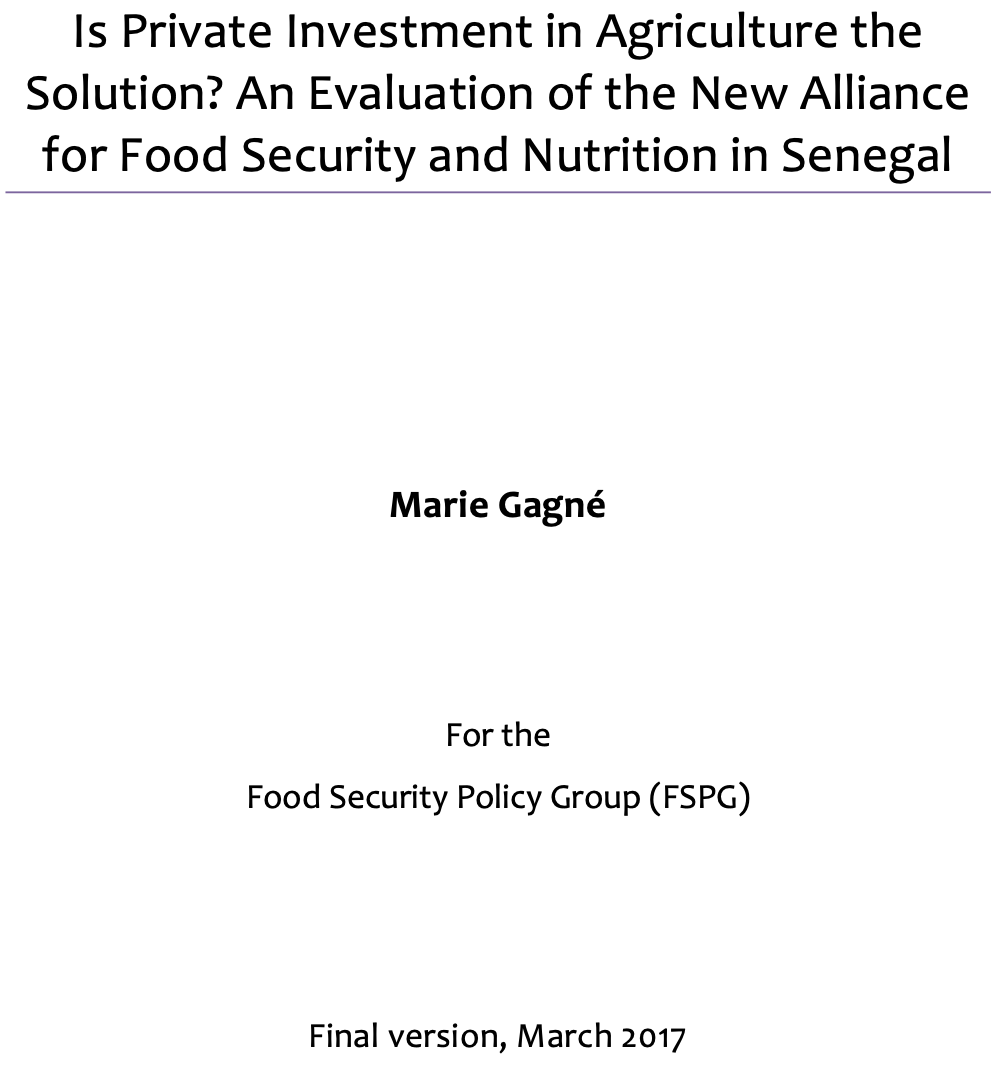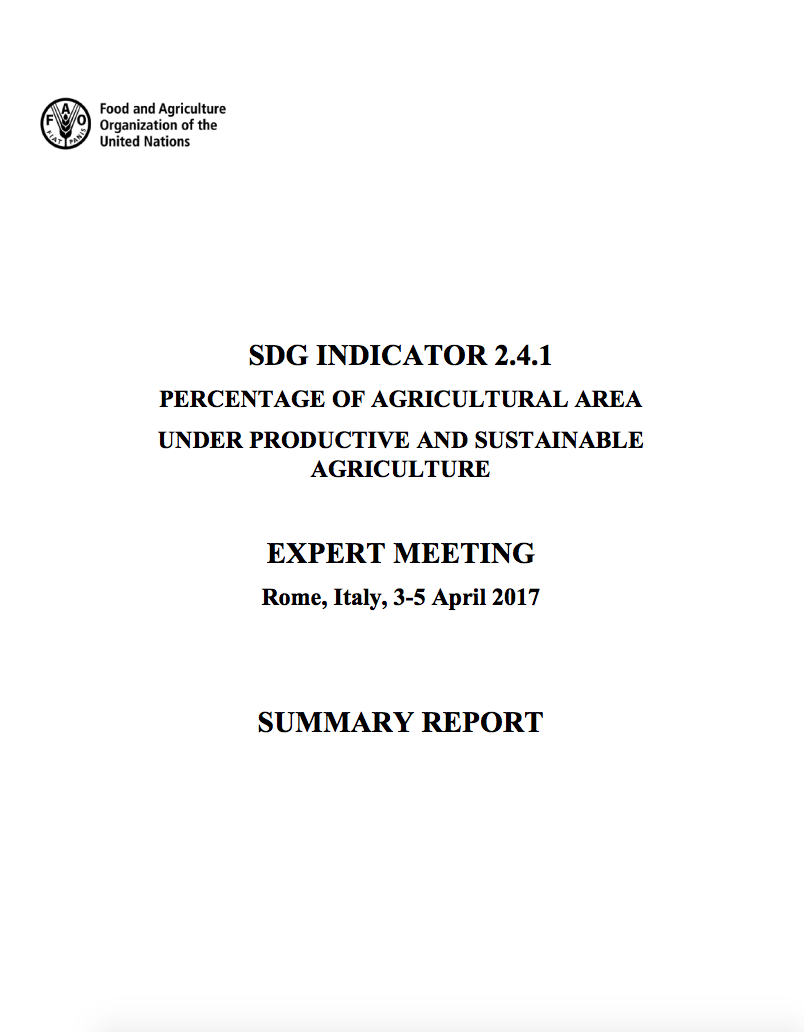Estratégia de produção camponesa em Moçambique estudo de caso no sul do Save
Este estudo tem por objectivo analisar as estratégias de produção dos pequenos produtores no Sul do Save, em Moçambique. A análise assenta na recolha de dados primários obtidos a partir da administração, em 2015, de 1200 questionários junto da população alvo, no âmbito de um projecto de investigação em curso no Observatório do Meio Rural (OMR) em Moçambique. A reflexão aqui apresentada inspira-se nos contributos das principais correntes teóricas e estudos empíricos relacionados com as estratégias de produção dos pequenos produtores.











